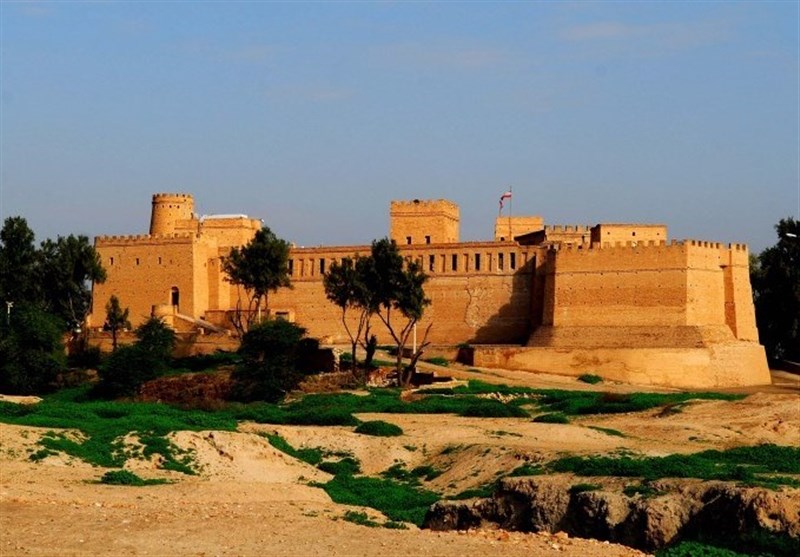 |
| Elamite empire map |
The country of Elam encompassed the southwest of modern Iran. The Elamites designated themselves as Haltamti, from which the Akkadians derived Elamtu. Susa and Anshan were the two major centers of Elamite civilization.
The proto-Elamite period (c. 3400–2700 b.c.e.) witnessed the emergence of writing at Susa. This proto-Elamite script differed sufficiently from Mesopotamian scripts to indicate a different language. Indeed, the Elamite language is unrelated to other known ancient languages.
From the Old Elamite Period (c. 2700–2100 b.c.e.) Mesopotamian texts begin to mention Elam. Because native texts remain sparse, Elamite chronology derives much from Mesopotamian records. Elam’s encounter with the Agade kings illustrates a recurring trait in its history: Elam’s lowlands are readily accessible from the west and periodically came under Mesopotamian control.
  |
By contrast, the Zagros highlands are more isolated by topography and experienced more autonomy. Accordingly, Susa and the Khuzistan plains (in southwest Iran) were the regions that fell most completely under Akkadian dominion.
After Agade’s fall, the Elamite Puzur-Inshushinak claimed the title king of Awan (an Iranian region). His incursion into Mesopotamia was deterred by Ur-Nammu, and Susa fell under Ur III dynasty rule. The Shimashki dynasty (c. 2100–1900 b.c.e.) emerged in the highlands, a result of alliances formed against Ur.
The Elamites eventually regained control of the lowlands, even mov ing west to destroy Ur and capture its last king, Ibbi-Sin. The Elamite king Kindattu managed to occupy Ur but was soon expelled by Ishbi-Erra, founder of the first dynasty of Isin.
 |
| Ancient city, Susa |
The Sukkalmah era (c. 1900–1600 b.c.e.) is best attested in the records, when Elam experienced unprecedented prosperity. A triumvirate from the same dynastic family ruled the country: The sukkalmah (grand regent), the sukkal (regent) of Elam and Shimashki in second place, and the sukkal of Susa in third place.
The ascendancy of the city-state of Larsa over Isin was propitious for Elam, and the Elamites even established a dynasty at Larsa. Elam dominated the eastern edge of Mesopotamia, exerting its economic (especially tin trading) and diplomatic presence as far as northern Syria. Hammurabi’s conquests, however, led Elam to decline in the following centuries.
The Middle Elamite Period (c. 1600–1100 b.c.e.) saw a resurgence of Elamite power, marked by the use of the title king of Anshan and Susa. From c. 1400–1200 b.c.e., relations between Elam and Kassite Babylonia were promoted by means of several royal inter-marriages.
   |
However, with the rise of a new Elamite dynasty, Shutruk-Nahhunte put an end to Kassite hegemony by raiding southern Mesopotamia, bringing to Elam such important monuments as Naram-Sin’s Victory Stela and Hammurabi’s Law Code.
His son, Kutir-Nahhunte, terminated the Kassite dynasty by deposing Enlil-nadin-ahi and brought home Marduk’s cult statue from Babylon. Nebuchadnezzar I eventually reclaimed this statue when he sacked Elam around 1100 b.c.e.
During the Neo-Elamite Period (c. 1100–539 b.c.e.) the country faced pressures from two fronts: Medo-Persian encroachment on the highlands and Assyrian aggression toward the lowlands.
The Elamites suffered Assyrian vengeance for being Babylonian allies against the growing Neo-Assyrian Empire. In 647 b.c.e., Ashurbanipal despoiled Susa. Moreover, in 539 b.c.e., Cyrus II conquered Babylonia and extended Achaemenid control over Elam.
Until the Hellenization of the region Elamite culture continued to assert itself through the use of the Elamite language in official documents, the worship of Elamite deities, and the importance of Anshan and Susa in the Persian Empire.